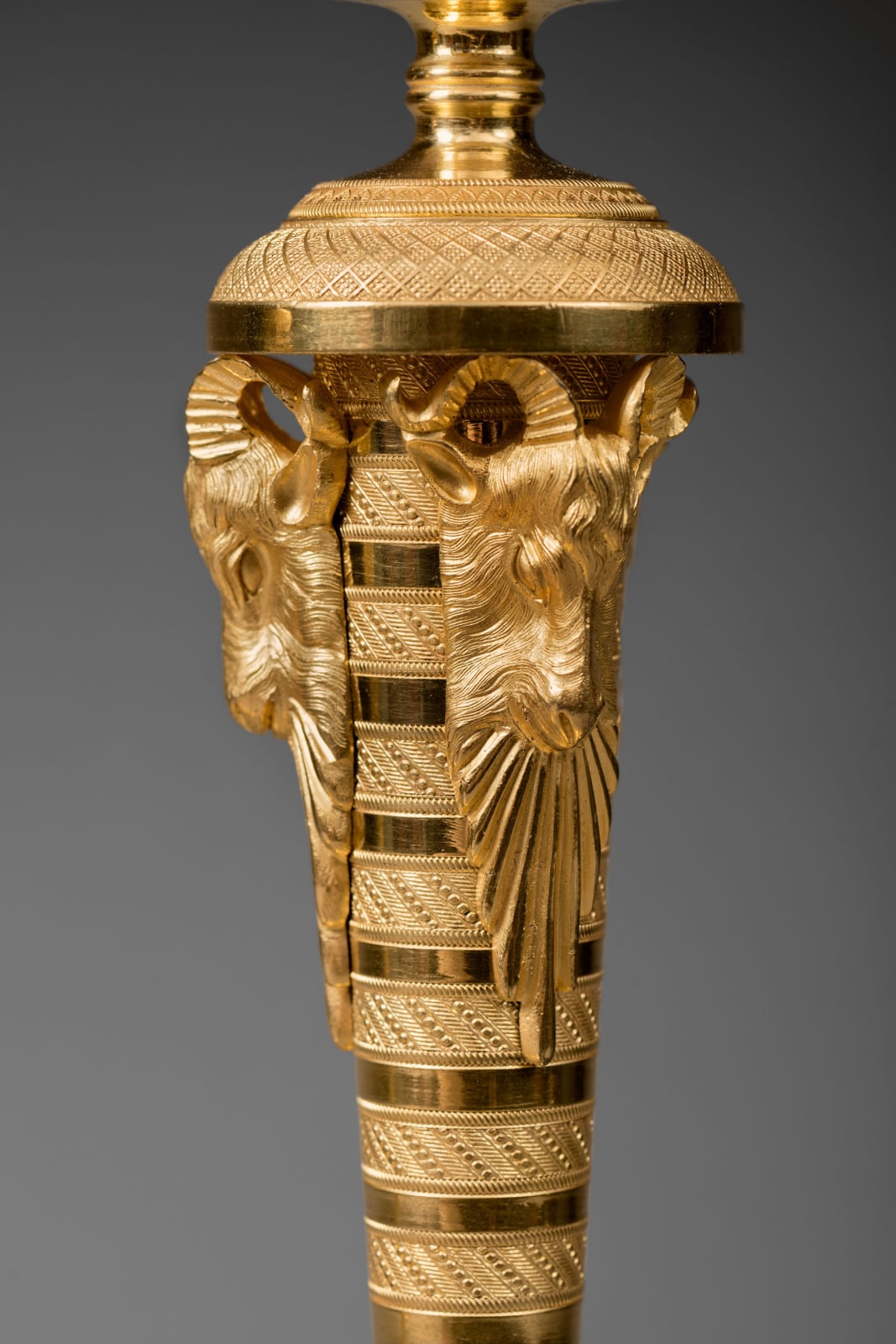Unknown
Literature
Igor Sychev, Russian Bronze, Trefoil, Moscow, 2003
A very fine and rare pair of Russian Empire gilt bronze candlesticks
Russia, circa 1810
Height 35.5 cm; diameter of the base 14.5 cm
Each candlestick is made of very finely chased and engine-turned bronze. The tapering stems are adorned with bands decorated with diagonal bead friezes framed by stylized cords, alternating with plain, burnished bands. Their upper portions are embellished with three horned ram’s heads that support an entablature decorated with palmettes and a cross-hatch frieze, which is surmounted by a nozzle, whose stem is adorned with molding. Forming the drip pan and binet, it is decorated with a millefiori motif. Each candlestick stands on three clawed lion’s paw feet that rest upon a sphere, which in turn stands upon a round base decorated with engine-turning and a chased frieze of stylized palmettes alternating with flowers, against a matted ground.
This rare pair of large candlesticks is a perfect illustration of the quality of Russian bronze furnishings, the basic production skills of which were developed in the late 18th century, and were perfected, in workshops located mostly in Moscow and St. Petersburg, during the first decades of the following century. During the reign of Empress Catherine the Great, there was a remarkable renewal of shapes and motifs in the Russian decorative arts, due to the omnipresent French influence. French clockmakers, painters, sculptors, and bronze casters were invited to Russia and called on to take part in redecorating the Imperial palaces. Toward the end of the 18th century, Russian princes who traveled to Paris acquired huge amounts of candelabra, candlesticks, clocks, etc., from the important Parisian merchants and bronze casters of the day, and in particular from Pierre-Philippe Thomire. Thus, in the early 19th century, large numbers of French or Parisian-style bronze furnishings could be found in Russia. These pieces greatly influenced the Russian decorative arts over the course of several decades. The present pair of candlesticks was created in this particular context. Their large size, the exceptional quality of their matte gilding, the precision of their chasing - and in particular the treatment of the rams’ heads and the engine-turned motifs, a technique characteristic of the Moscow workshops of the time – rank them among the finest Russian creations of the first quarter of the 19th century.
Today only a very few similar examples are known, featuring variations in the quality and the elaborateness of their decoration. One model, which is partially patinated with a plain, undecorated stem, is in the Ostankino Museum near Moscow (illustrated in I. Efremova, I. Petuhova and ID. Rudentsovyh, Lighting Devices, Collection of the Museum Estate Ostankino, Moscow, 2005, p. 309, fig. 248-249). A second pair of candlesticks, nearly identical to the present model, which was made in a Moscow workshop, is illustrated in I. Sychev, The Russian Chandeliers 1760-1830, P.V.B.R., 2003, p. 191, fig. 968.



